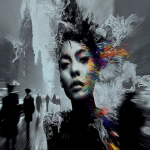Explore the Best AI Image Gallery

Pixels on Skin: How AI-Generated Images are Transforming Marketing
The marketing landscape is undergoing a radical shift, driven by the emergence of artificial intelligence (AI) and its ability to generate stunningly realistic images. No longer confined to the realm of science fiction, AI image generation is becoming an integral part of marketing strategies, offering brands unprecedented opportunities for creativity, personalization, and engagement.
A New Era of Creative Expression
AI-powered tools like DALL-E 2, Midjourney, and Stable Diffusion are empowering marketers to create bespoke visuals tailored to specific campaigns. These platforms allow users to input text prompts, translating words into captivating imagery with remarkable accuracy and detail. This opens up a world of possibilities for generating product mockups, advertising assets, social media content, and even personalized marketing materials.
The Potential Uses are Limitless
- Personalized Marketing: Imagine tailoring marketing campaigns to individual customer preferences. AI can generate unique images based on user data, demographics, and browsing history, creating highly targeted and engaging experiences.
- Interactive Content: AI-generated imagery can be incorporated into interactive content, such as games or quizzes, enhancing user engagement and brand recall.
- Dynamic Advertising: Ads can evolve in real-time based on user behavior and context. AI can generate relevant visuals to capture attention and drive conversions.
- Content Creation at Scale: Marketers can leverage AI to rapidly produce a vast library of visual content, freeing up time for strategic planning and creative brainstorming.
Ethical Considerations in the Age of AI
While the potential benefits are undeniable, the rise of AI-generated imagery also raises ethical concerns. Its crucial to address these challenges proactively to ensure responsible and transparent use:
- Copyright and Ownership: Who owns the copyright to AI-generated images? The platform provider, the user who inputs the prompt, or the AI itself? This legal grey area needs clarification.
- Bias and Representation: AI models are trained on massive datasets, which can contain inherent biases. This can result in generated images that perpetuate stereotypes or lack diversity, requiring careful monitoring and mitigation strategies.
- Misinformation and Deepfakes: The ability to create hyperrealistic fake images poses a significant risk for spreading misinformation and manipulating public opinion. Robust fact-checking mechanisms and media literacy are essential to combat this threat.
Looking Ahead: The Future of AI Images in Marketing
The integration of AI image generation into marketing is still in its early stages, but the future holds immense possibilities:
- Personalized Shopping Experiences: Imagine visualizing how different clothing styles or furniture pieces would look in your own home using AI-generated images.
- Immersive Brand Storytelling: AI can create interactive narratives and visual experiences that transport consumers into brand worlds, fostering deeper emotional connections.
- Democratization of Creativity: AI tools will empower individuals with limited design skills to create professional-quality visuals, opening up new avenues for self-expression and entrepreneurship.
As AI technology continues to evolve, its impact on marketing will only grow. By embracing ethical guidelines and fostering responsible innovation, we can harness the power of AI to create a more creative, engaging, and personalized future for consumers and brands alike.





](https://images.ai-img.art/thumbnails/150/7cf5a08238f29c821f52bb4f63db48af0b7f633ff3b9f7253074d78ced9ff6f6.webp)


](https://images.ai-img.art/thumbnails/150/bd056a4718c27444e064198762f8dc8ffa1f74f1afd7dcda8d5cb8b142797d6e.webp)

](https://images.ai-img.art/thumbnails/150/a3ed6513a6661aa3ee46e0c2924d1e8888854e91d8908de39db5590dc41f8d8f.webp)


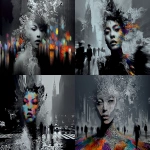




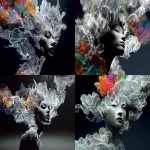



](https://images.ai-img.art/thumbnails/150/847809c77ca9a73b68bc190e6efb06fec87157685a243730d5a66a403b0e6e10.webp)




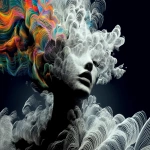







](https://images.ai-img.art/thumbnails/150/0ba0be922ab76af53f75ab90126ae2b18a600ee3b96941e8ab897a9f10594e5a.webp)

](https://images.ai-img.art/thumbnails/150/685ae68cfab93a7e59a71206867b060c45bd6fd3cd561c4fe60fca514b09c5f8.webp)




](https://images.ai-img.art/thumbnails/150/2ebdeb4f7db35100e5be5de9bc3e533a40d14e5feedefd7ffc586524a0f3ba8c.webp)
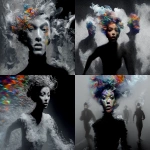

](https://images.ai-img.art/thumbnails/150/ff09e32d2be011c0dd785984c5c1e47839ce551a31da1bde242860b30df2aa30.webp)
